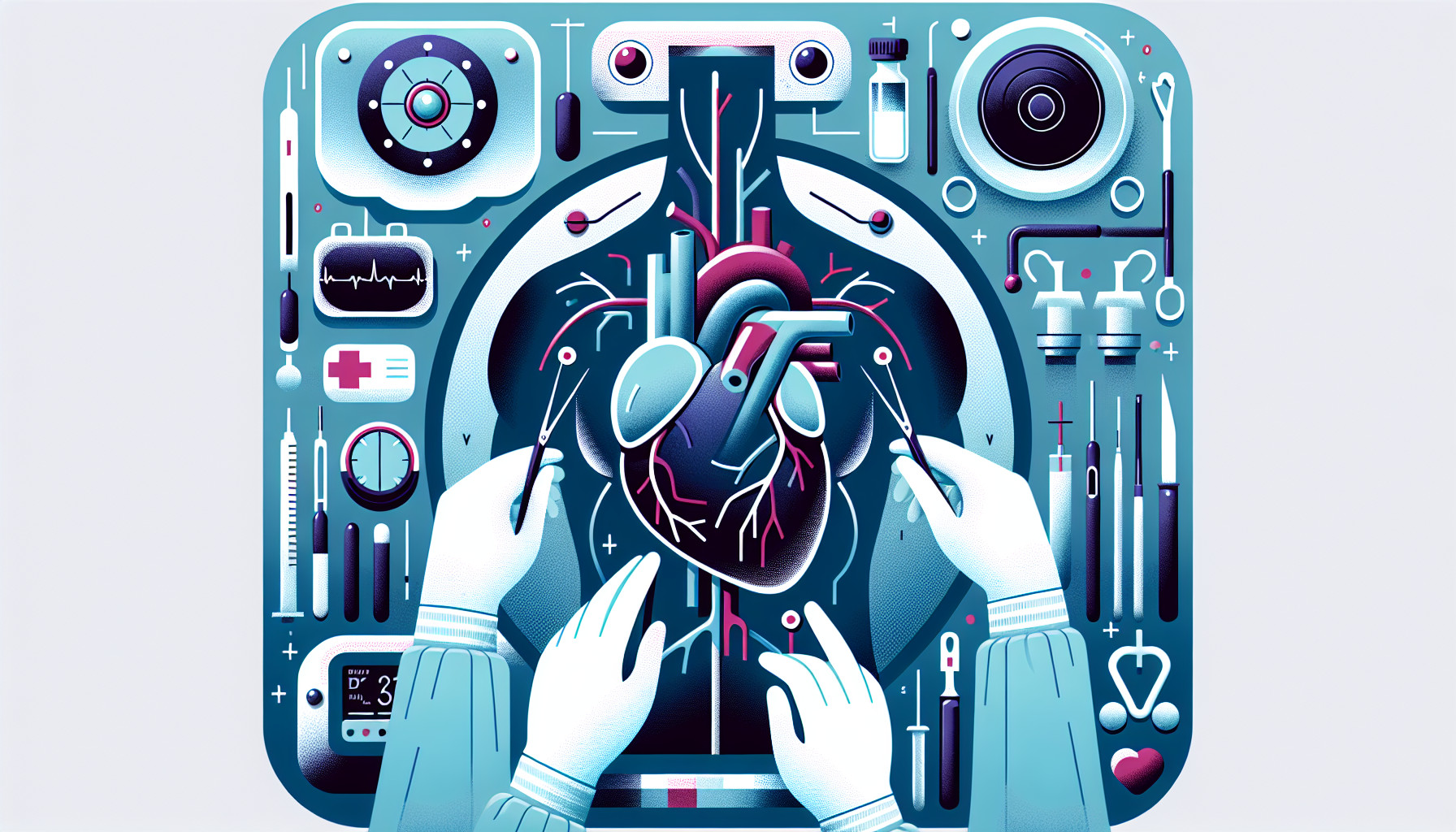Our Summary
This research paper uses computer simulations to understand how the size and shape of a vein graft used in heart bypass surgery can affect blood flow in the body. The scientists created 3D models based on real patients and virtually “performed” surgery by adjusting the graft’s size and configuration. They found that the flow of blood to the heart doesn’t change much based on the size or shape of the graft. However, the stress on the graft itself can increase significantly if the diameter is reduced, following a rule known as inverse power scaling. The amount of stress also changes depending on the graft’s configuration and flow rate. The researchers suggest that these findings could help surgeons decide which graft size and shape to use based on the risk of graft failure.
FAQs
- What does this research paper about coronary artery bypass focus on?
- What were the findings of the computer simulations on vein graft size and shape in heart bypass surgery?
- How could the findings of this research influence future heart bypass surgeries?
Doctor’s Tip
A helpful tip a doctor might give a patient about coronary artery bypass surgery is to follow a healthy lifestyle post-surgery, including maintaining a balanced diet, regular exercise, not smoking, and managing stress. These factors can help improve the success of the surgery and reduce the risk of future heart problems. Additionally, it’s important for patients to attend follow-up appointments and adhere to any prescribed medications to ensure the best outcome.
Suitable For
Patients who are recommended for coronary artery bypass surgery typically have severe coronary artery disease, which is a condition where the blood vessels that supply the heart with oxygen-rich blood become narrowed or blocked. This can lead to chest pain (angina), shortness of breath, and an increased risk of heart attack.
Specific criteria for recommending coronary artery bypass surgery may include:
- Severe blockages in multiple coronary arteries that cannot be effectively treated with medication or less invasive procedures such as angioplasty.
- Severe narrowing or blockage in the left main coronary artery, which supplies a large portion of the heart muscle with blood.
- Presence of significant blockages in the coronary arteries that supply a large area of the heart muscle, leading to symptoms such as heart failure.
- Previous unsuccessful interventions such as angioplasty or stenting.
- High risk of complications from other treatment options due to other medical conditions or anatomy.
Ultimately, the decision to recommend coronary artery bypass surgery is made on a case-by-case basis by a team of healthcare providers, including cardiologists and cardiac surgeons, taking into account the patient’s overall health, symptoms, and the severity of their coronary artery disease.
Timeline
Before coronary artery bypass surgery:
- Patient undergoes diagnostic tests such as an angiogram to determine the extent of blockages in the coronary arteries.
- Patient may undergo lifestyle changes, medications, or other treatments to manage symptoms and improve heart health.
- Patient meets with a surgeon and discusses the risks and benefits of surgery.
During coronary artery bypass surgery:
- Surgeon makes an incision in the chest and stops the heart temporarily.
- Surgeon takes a vein or artery from another part of the body and uses it to bypass the blocked coronary artery, restoring blood flow to the heart.
- Surgery can take several hours and may involve multiple bypass grafts.
After coronary artery bypass surgery:
- Patient is monitored in the intensive care unit for a few days before being transferred to a regular hospital room.
- Patient undergoes physical therapy to regain strength and mobility.
- Patient is prescribed medications to manage pain, prevent infection, and reduce the risk of blood clots.
- Patient may need to make lifestyle changes such as diet and exercise to prevent future heart problems.
- Follow-up appointments with the surgeon and cardiologist are scheduled to monitor recovery and assess the success of the surgery.
What to Ask Your Doctor
- What are the potential risks and benefits of coronary artery bypass surgery for my specific condition?
- How will the size and shape of the vein graft used in the surgery affect my recovery and long-term outcomes?
- Are there any alternative treatment options to coronary artery bypass surgery that I should consider?
- How will the choice of graft size and configuration impact the likelihood of graft failure in the future?
- What is the success rate of coronary artery bypass surgery with different sizes and shapes of vein grafts?
- How long is the recovery process expected to take, and what lifestyle changes will be necessary post-surgery?
- Will I need to take any medications or undergo additional procedures after the surgery to prevent complications?
- Are there any specific warning signs or symptoms that I should watch out for after the surgery?
- How frequently will follow-up appointments be needed to monitor my progress and assess the health of the vein graft?
- Are there any specific dietary or exercise recommendations that I should follow to improve the success of the surgery and prevent future heart problems?
Reference
Authors: Seo J, Ramachandra AB, Boyd J, Marsden AL, Kahn AM. Journal: Semin Thorac Cardiovasc Surg. 2022 Summer;34(2):521-532. doi: 10.1053/j.semtcvs.2021.03.007. Epub 2021 Mar 10. PMID: 33711465
